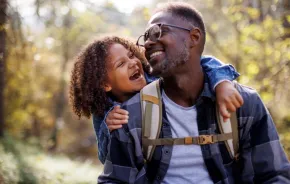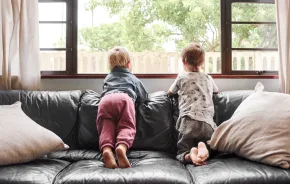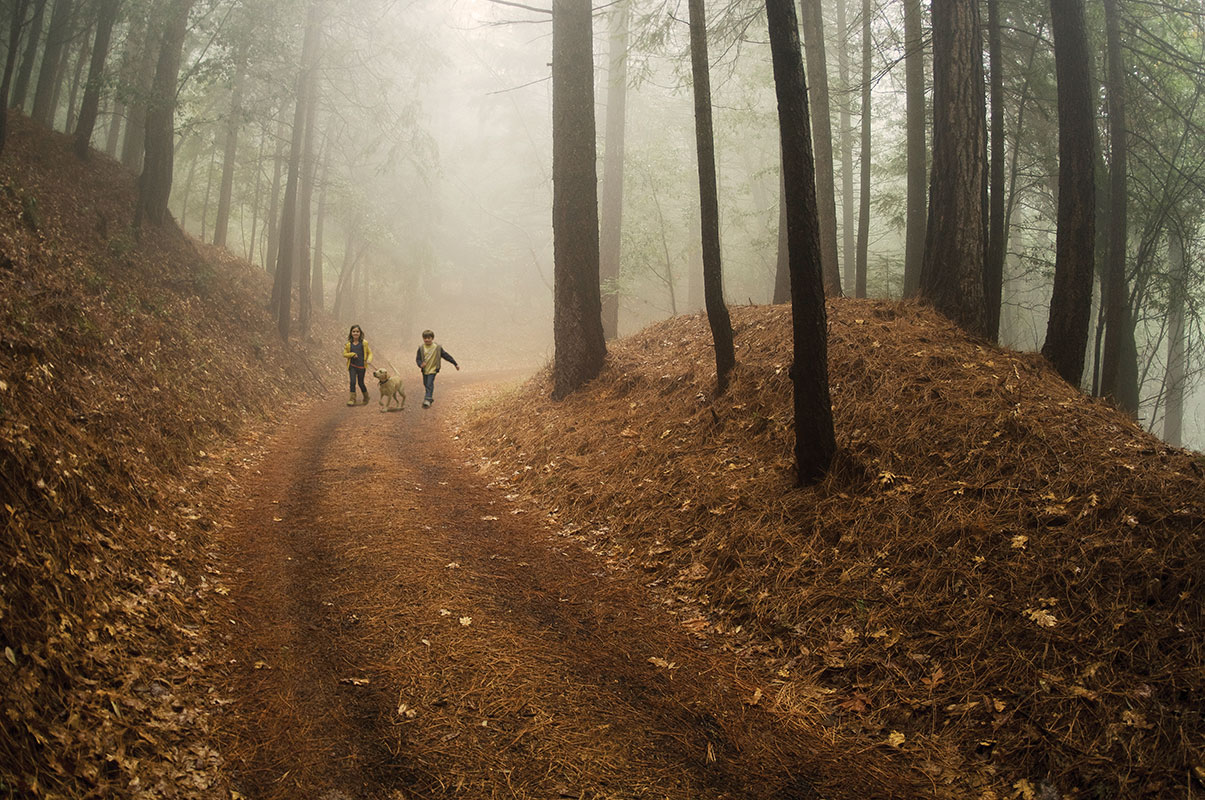
A few years ago, my wife, Kathy, and I traveled by train from the southwest corner of England to the middle of Scotland. We were enthralled by the countryside. The old villages and newer cities were embraced by farms and forests; so much of what is old and beautiful and harmonious with nature was preserved. Where were the strip malls, the endless housing tracts?
Our fellow travelers, who were British, kindly reminded us that the U.K. does, like the U.S., have its share of sterile developments. Still, the ancient feudal system’s upside is that much of the open land, long preserved for the nobility, has endured for centuries.
Yet as our train moved north through this idyllic countryside, I was struck by a similarity that transcended national boundaries: I saw few children playing outdoors.
It is an irony that, even in places where the natural world is deeply embedded in the history and culture (in many ways, into the very identity) of the people — as in the English countryside and the Pacific Northwest — people fail to get outdoors. On any given day in Seattle, for example, parents and kids are locked inside, focused on homework and screens and manufactured spaces, far removed — if not in physical distance, then certainly in emotional distance — from the landscape that they believe, in theory, so reflects and inspires them.
Fortunately, across cultures, our modern mind-set and habits are beginning to swing back toward the wisdom, or necessity, of eras past.
The availability of nature is, of course, a prerequisite for human connection to nature. Parts of the United States — including swaths of the Great Northwest — are rich in easily accessible nature. But access is only one factor.
Sure, in every modern country, you’ll find some children outside romping and playing, but whether in Belfast, Bellingham or Brisbane, parents fear strangers (a concern amplified by news media) and traffic (truly a growing threat); they struggle with ubiquitous electronics and poor urban planning. In my book Last Child in the Woods, I called the effect “nature-deficit disorder.” That’s not a known medical diagnosis but a metaphor — a phrase to describe what many of us have sensed was happening during recent decades: a lost connection to the natural world.
Better than a pill, cheaper than a tutor
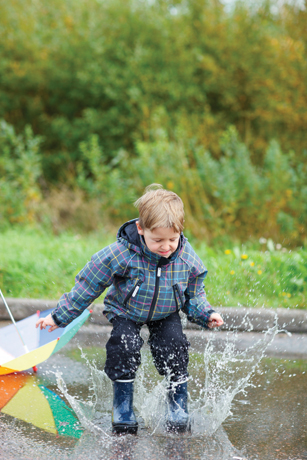 The term “nature-deficit disorder” has entered several languages. It’s become a rallying cry for the now international movement that some call Leave No Child Left Inside. But the barriers remain. We consider Suzuki violin lessons to be an enrichment for our children, but a walk in the woods? A natural play space or an unpaved, wild-growing school yard? Not so much.
The term “nature-deficit disorder” has entered several languages. It’s become a rallying cry for the now international movement that some call Leave No Child Left Inside. But the barriers remain. We consider Suzuki violin lessons to be an enrichment for our children, but a walk in the woods? A natural play space or an unpaved, wild-growing school yard? Not so much.
Still, attitudes are beginning to change, helping us heed what might be a biological drive to engage with nature. Why? First, a relatively new body of scientific evidence has emerged, pointing to the benefits of nature experience. Second, a growing number of parents and policymakers know about that evidence, and they’re creating a powerful movement.
Here’s a sampling of what we now know.
Time spent in nature — even a walk through trees in an urban park — can have a positive impact on mental and physical health and the ability to learn. Exposure to nature can improve resistance to negative stresses and depression. A room with a view of nature, versus one without, can help protect children against stress. And the protective impact of nearby nature is strongest for the most vulnerable children — those experiencing the highest levels of stress from overwhelming life events.
Want your children to get into Harvard? Tell them to go outside.
Studies by the Landscape and Human Health Laboratory at the University of Illinois show that direct exposure to nature can relieve the symptoms of attention deficit disorders. By comparison, indoor activities, such as watching television, or outdoor activities in paved, non-green areas leave these children functioning worse.
Cognitive development and creativity are stimulated by childhood experiences in nature. Schools that use outdoor classrooms and other forms of nature-based education report significant student gains in social studies, science, language arts and math. Children are more likely to invent their own games in green play spaces, compared with children playing on flat playgrounds or playing fields.
In Finland, getting kids outside is seen not as a bonus, but as a necessity. Students there lead the world in math and science scores; in that country, it’s an article of faith that the best education includes lots of recess and learning time outdoors. In Scandinavia, students in all-weather schools (they go outside nearly every day, no matter the weather) have fewer colds and less flu.
Spending more time outdoors can also help reduce myopia, and greener neighborhoods are associated with lower levels of child obesity.
But what about the risks of going outside?
Broken bones used to be a rite of passage. No one wants more of those, but pediatricians report an alarming rise in repetitive stress injuries among children who spend too much time with electronics. Such injuries take far longer to heal — sometimes decades — compared with the typical broken bone.
In the U.S., the number of incidences of violent crime toward children has been in decline for decades. This is not to say there is no threat, or that knowing about that decline is necessarily comforting to parents, who must remain vigilant. But the risk of a child being taken or harmed while playing outside pales in comparison to the much larger risk of the sedentary lifestyle that so many children and their families lead.
Enrolling your child in a gym may help. But Bill Kohl, professor of epidemiology and kinesiology at the University of Texas Health Science Center, who leads an international effort to address what he’s coined as the “pandemic of inactivity,” argues that “the best predictor of kids’ physical activity is time spent outside.” Soccer and other organized sports and activities can help, but there’s no replacement for free, independent play — especially in natural settings.
An inborn need for nature
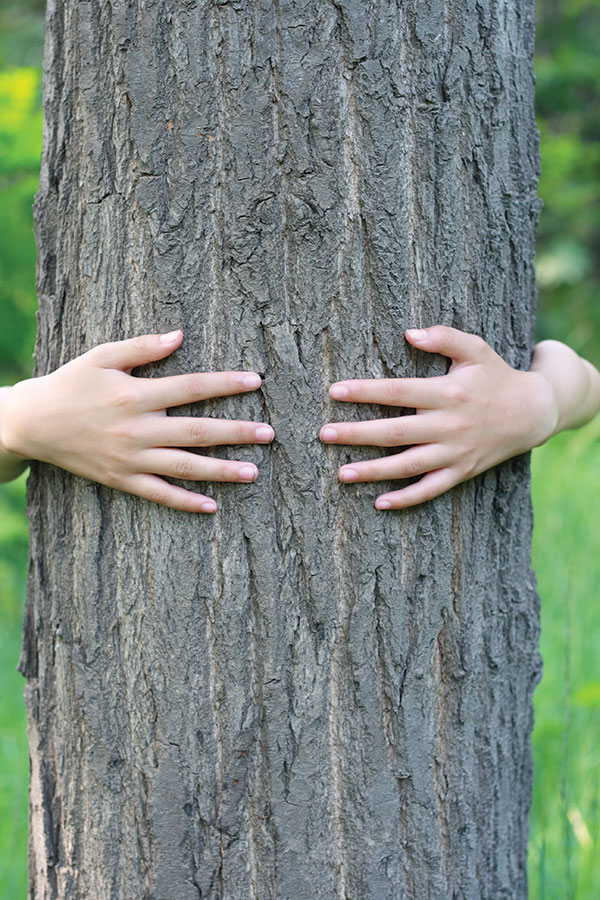 Why does time spent in nature appear to have such power? The answers may be hidden in our mitochondria. As hypothesized by Harvard’s E.O. Wilson, “biophilia” is our “innately emotional affiliation to . . . other living organisms,” and that may extend to the landscape as well.
Why does time spent in nature appear to have such power? The answers may be hidden in our mitochondria. As hypothesized by Harvard’s E.O. Wilson, “biophilia” is our “innately emotional affiliation to . . . other living organisms,” and that may extend to the landscape as well.
Several decades of research back his theory. In the 1970s, environmental psychologists Rachel and Stephen Kaplan began foundational work in the study of nature’s healing effect on the mind. Their studies suggested that contact with nature can assist with recovery from mental fatigue and help restore attention. Meaningful contact with nature can also help reboot the brain’s ability to think. And it excites the senses.
More research needs to be done. But as Howard Frumkin, dean of the School of Public Health at the University of Washington and board chair for the Children & Nature Network, says, “We know enough to act.”
Meanwhile, the children-and-nature movement is growing.
Media outlets, authors and bloggers are advancing the public conversation around the benefits of unplugging and reconnecting to nature. Local and national programs, such as Washington’s IslandWood and North Cascades Institute, reach thousands of children and families. Conservation organizations are on board, as are such companies as REI, The North Face, Clif Bar, Lindblad Expeditions and Disney. At the grass roots, approximately 115 homegrown regional and state campaigns to connect kids to nature have sprung up in North America.
This issue brings people together across political and religious divides. Beginning with Republican Dirk Kempthorne, three interior secretaries have taken up the cause. On Nov. 7 of last year, Seattleite and Secretary of the Interior Sally Jewell launched a major initiative to expand opportunities for youth on public lands; among the objectives is to “develop or enhance outdoor recreation partnerships in a total of 50 cities over the next four years to create new, systemic opportunities for outdoor play for more than 10 million young people.”
Two days earlier, the American Public Health Association adopted a policy statement calling “on public health, medical and other health professionals to raise awareness among patients and the public at large about the health benefits of spending time in nature and of nature-based play and recreation.” Pediatricians and other health professionals are beginning to “prescribe” nature.
Because of these and many more dedicated individuals and programs, connecting children — and adults — to nature is gaining traction everywhere, and at a deeper level than before. Last year, the World Congress of the International Union for the Conservation of Nature (IUCN), meeting in Jeju, South Korea, passed a resolution declaring that children have a human right to experience the natural world.
Reclaiming nature
Here are some ways you can act.
Help your child claim a special place in nature and discover a hidden universe. Encourage your kids to find a “sit spot” in the yard or nearby nature. Buy them a tent or help them make a canvas tepee for the yard, and leave it up all summer. Encourage them to build a tree house, fort or hut. You can provide the raw materials, including sticks, boards, blankets, boxes, ropes and nails, but it’s best if kids are the architects and builders.
Take a hike. With younger children, choose easier, shorter routes and prepare to stop often. Or be a strolling explorer. Collect stones and sticks. Build a backyard weather station. No special shoes or a drive to the soccer field is required for “clouding.” All a child or teenager needs is a view of the sky (even if it’s from a bedroom window) and a cloud guidebook. (Recommended: The Cloudspotter’s Guide.)“Create” nature. Maintain a birdbath. Replace part of your lawn with native plants. Plant a garden for food. If your children are little, choose seeds large enough for them to handle and that mature quickly, including vegetables. Families that live in a highly populated urban neighborhood can create a high-rise garden; a landing, deck, terrace or flat roof typically can accommodate several large pots. Young gardeners can help feed the family, sell their produce at a farmers’ market or donate it to a food bank.
Start a family nature club. To deal with the fear issue and build family bonding and social capital, band together with other families for group hikes and other nature experiences. Nearly 170 family nature clubs have been created by parents and grandparents around the country. Some of these clubs have hundreds of families each; one boasts more than a thousand families. Download a free toolkit to start your own family nature club.
Go on a techno-fast. Research shows that multitasking can divide attention and hurt one’s ability to learn and create. Children and parents need a break, and nature is the best place to take it. Set aside times in the day and every week — or a whole week or more — to leave the electronics behind. Exit the virtual and enter the real. Spend a little time in the Cascades, your yard or even the English countryside. Your kids may complain at first, but they’ll come back from the break feeling better. They’ll notice it. So will you.
For other ways to connect your family to nature, and to learn about the research supporting these ideas, visit the Children & Nature Network. And if you’re moved by this issue, please join the movement for children in the Northwest and around the world.
Richard Louv is the author of The Nature Principle: Human Restoration and the End of Nature-Deficit Disorder and Last Child in the Woods: Saving Our Children from Nature-Deficit Disorder. He is also chairman emeritus of the Children & Nature Network.
Nature lovers speak: First memories of the outdoors
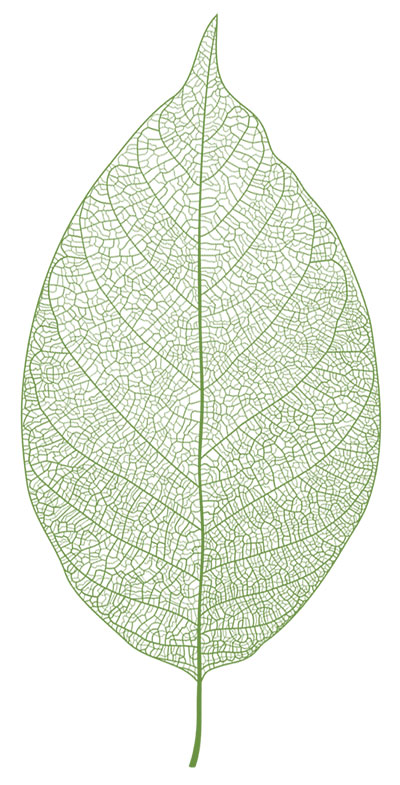 As a young skier on Snoqualmie Pass, I forged a connection with nature, family and friends riding up the ski lift each weekend. I see this connection forming with my own young children and family today. Riding the chair, we breathe the fresh mountain air and feel the snow and cold air on our noses. We notice the animal tracks in the snow and the icicles weighing down the trees. We get to the top of the mountain and feel that we are on top of the world, in a new place close to the clouds. We then take on the challenge of the mountain — with its bumps and obstacles and forgiving, soft white fluffiness. I see families getting closer to each other on the mountain, exercising and challenging themselves. I also see the happy faces of kids and adults with disabilities, their families, and volunteers who experience nature with the Outdoors for All Foundation. For 34 years, Outdoors for All has been transforming lives through outdoor recreation such as skiing, cycling, hiking, kayaking, climbing and more. By being on top of the mountain, we all feel connected to nature and to each other. We feel big and strong, and our problems feel small.
As a young skier on Snoqualmie Pass, I forged a connection with nature, family and friends riding up the ski lift each weekend. I see this connection forming with my own young children and family today. Riding the chair, we breathe the fresh mountain air and feel the snow and cold air on our noses. We notice the animal tracks in the snow and the icicles weighing down the trees. We get to the top of the mountain and feel that we are on top of the world, in a new place close to the clouds. We then take on the challenge of the mountain — with its bumps and obstacles and forgiving, soft white fluffiness. I see families getting closer to each other on the mountain, exercising and challenging themselves. I also see the happy faces of kids and adults with disabilities, their families, and volunteers who experience nature with the Outdoors for All Foundation. For 34 years, Outdoors for All has been transforming lives through outdoor recreation such as skiing, cycling, hiking, kayaking, climbing and more. By being on top of the mountain, we all feel connected to nature and to each other. We feel big and strong, and our problems feel small.
— Kathy Moffett McDonald, vice president, board of directors of Outdoors for All Foundation; granddaughter of Webb Moffett, founder of Snoqualmie Pass
When I was growing up in Seattle, nature had a profound impact on me and on our family. My dad was attending the University of Washington, and money was scarce. To find time for all of us to spend together, we would take a yearly trip to the Hoh Rain Forest in Olympic National Park, leaving the bright lights of Seattle behind. I can still remember the excitement at suddenly being in the green world of the Hoh. I vividly recall wearing a yellow rainslicker and looking up at the massive Douglas fir trees full of moss and lichen. And along with the trees and the world of green that was my playground, I remember bonding with my parents and our time as a family together. This is one of the reasons that we have taken our own daughter, Amelie, to the Hoh every year — to continue the tradition of having a family place in nature. The moment my daughter first looked up and said, “That tree is so big. Nature is cool, Dad,” I was reminded how
special nature is as a place where all families can connect.
— Martin LeBlanc, senior vice president, IslandWood
When I was 9 years old, I’d have underwater somersault contests with my older sister in Georgica Pond by our home in East Hampton . . . standing in shallow, green, murky, algae-choked water, walking out to where it was deep enough not to hit the bottom of the pond. I think the record was six in a row without having to surface for air. We were good enough swimmers that my mom let us play in the water unsupervised, so it was a blast to be outside and free.
— Ginny Gilder, owner, Seattle Storm
My first magic moment: I will never forget it. In fact, I can remember almost all of the details as if it were yesterday — piling into the car before dawn, sitting excitedly in the backseat as a 10-year-old awaiting a grand adventure. Then arriving at sunrise and gazing in amazement at the beauty of Mount Rainier in the morning light. Traipsing along winding trails; around green, wavy bends; over rushing, gurgling streams. Arriving at the final destination — an actual mountain named Skyscraper! Poring over maps with my father, munching on snacks with my mother, and exploring with my sisters. And then a similar yet wonderfully different adventure occurred on the way home — this time facing Mount Rainer as the sun started to set. To this day, I have a very special feeling for Mount Rainier, and that expedition cemented a direction for my life. I now work at Washington Trails Association — the best place I can imagine — which can be attributed to that first memorable day in the park.
— Karen Daubert, executive director, Washington Trails Association
My entire childhood was spent in and out of the great outdoors: tramping through the neighborhood woods, fighting imagined wars in local parks, carving hose-fed networks of canals into my backyard, and hiking in the Cascades with my family and dog. One particularly vivid memory is building a dugout shelter with my constant companions, the Darrah brothers. We were in the foothills above Mount Vernon, armed with folding Army surplus shovels. We spent a season of Saturdays excavating the dark loam from between two fallen logs, then we erected a roof of arm-thick limbs, each broken to length by aggressive stomping and lashed down with twine. I will never forget the scent of moss and fir needles that wrapped us like a cape as we finally sat proudly within, the streaks of tree-filtered light turning us to striped royalty. Striped and satisfied with our castle, we feasted on Mrs. Darrah’s apples and bologna sandwiches.
— Alan Durning, executive director, Sightline
Growing up in Baltimore, my first real experiences with nature were in the city park across the street from our house. The park occupied an entire city block, and while it was popular for its tulips in the springtime, I enjoyed it most at other times of year when it was mostly deserted, except for the neighborhood kids. Throughout my elementary years, I spent hours playing in the park: climbing trees, hiding out in the azaleas, and embarking on imaginary adventures with my friends. In summer, we chased each other through the hedges, our hearts pounding as we crouched to watch small birds and squirrels. In autumn, we gathered acorns, leaves and seeds for pretend stews that my mother let me keep in our kitchen until they started to smell. In the winter when it snowed, that park was the quietest place on earth. Although as an adult I have explored and found my home in much wilder places, the roots of my love for nature are in that small park in the city.
— Meredith Lohr, co-executive director, Washington Green Schools






